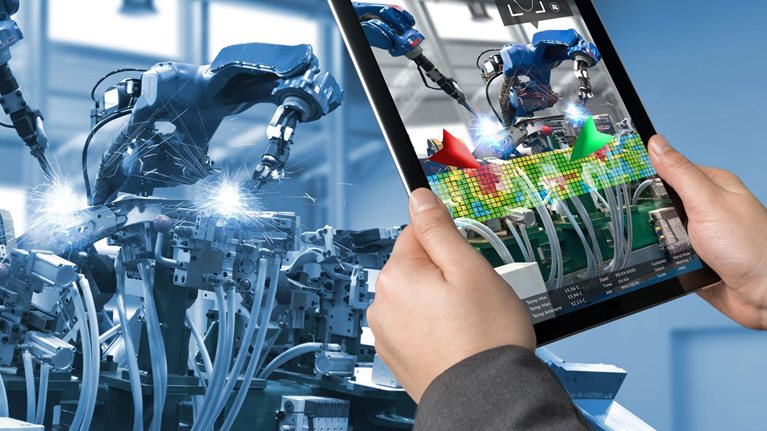The latest findings from the Global Lighthouse Network, an ongoing research project by the World Economic Forum in collaboration with McKinsey, confirm the transformative power of innovative manufacturing technologies for today’s businesses. As the Fourth Industrial Revolution (4IR) progresses, innovative technologies continue to enable remarkable economic and societal advances. Together, 4IR innovations are expected to create up to $3.7 trillion in value by 2025. But that value won’t be spread evenly. It’s already clear that a small number of organizations are running away with the first-mover advantage.
In 2018, the World Economic Forum, with knowledge support from McKinsey, identified 16 companies as 4IR leaders for their work in scaling digital use cases beyond the pilot phase across individual sites: these sites were designated as advanced manufacturing “Lighthouses”.
In 2019, a further 28 facilities were identified and added to the network, bringing the total to 44 (Exhibit 1). Even more significantly, some companies are generating value from 4IR technologies far beyond the four walls of their factories: 14 of these 28 new sites have been recognized as end-to-end (E2E) Lighthouses, integrating manufacturing innovation from their suppliers through to their customers and beyond.

Lighthouses have succeeded by innovating a new operating system, including how they manage and optimize businesses and processes, transform the way people work, and use technology. These new operating systems can become the blueprint for modernizing the entire company operating system; therefore, how they prepare for scaling up for engaging the workforce matters.
These insights are going to be critical for the vast majority of manufacturers that aren’t yet competitive with Lighthouses—the 70 percent that are still languishing in “pilot purgatory,” unable to bring manufacturing innovation to scale. They’re at higher and higher risk of falling permanently behind the leaders.
The 44 designated factories show remarkable diversity. They arise across industries, sectors and geographies, ranging from single-site SMEs to some of the world’s largest corporations, from remote jungles to the largest cities, and from heavy industries such as mining and automotive to electronics and consumer-goods makers. Leadership in digital manufacturing is open to anyone willing to commit to it.
Leadership in digital manufacturing is open to anyone willing to commit to it.
The success factors for the Fourth Industrial Revolution
Several factors differentiate Lighthouse organizations from others as the gap between frontrunners and other manufacturers grows. Most important, Lighthouse organizations are leading the way through their adoption of critical 4IR technologies, including digitization, automation, advanced and predictive analytics, virtual and augmented reality, and the Industrial Internet of Things (IIoT).
The latest additions to the network bring new insights, particularly the operations that focus on connecting their value chains from end to end. We are also beginning to see companies scaling their innovative operating systems to other plants in their manufacturing network. And they are pushing the envelope of technological advancement to reshape the entire customer journey.
To support these advances, the Lighthouse network has collectively expanded 4IR’s potential by developing a toolbox that now totals some 92 high-impact use cases across the supply network, product development, planning, delivery, customer connectivity, and digitally enabled sustainability. Deploying these innovations compounds Lighthouses’ competitive advantages by creating a fundamentally new operating system, which makes it easier to add further use cases in minimal time and at minimal cost. The result is that Lighthouses are experiencing much higher returns on investment than companies with traditional, slower-moving operating systems.
Secrets to scaling fast
To innovate their operating systems more deeply, Lighthouses work across four dimensions at once: their business processes, management systems, people systems, and their IIoT and data systems. The resulting structure becomes a unit that the company can scale across other lighthouses (Exhibit 2).

In addition, E2E Lighthouses take six enablers and apply them in an even broader context across the value chain.
An agile approach makes iteration continuous. This change stands in stark contrast to yearlong pilots that are designed for perfection, but are outdated once complete as technology has evolved more quickly than the solutions themselves. A focus on agility helped Unilever’s Dubai Personal Care Site (DPC) unlock growth while improving cost and responsiveness to customers—while a similar effort at Petkim, a Turkish integrated petrochemical company, raised yield and throughput, energy efficiency, and product quality.
A technology ecosystem enables new levels of collaboration, facilitated by a digital infrastructure. Lighthouse organizations use partnerships to bring new capabilities to the enterprise. In a shift from safeguarding technological solutions as a source of competitive advantage, large amounts of data are being exchanged with suppliers, partners in tangential industries, and customers. Unilever DPC’s factory-maintenance team worked with a startup company to design a new maintenance-management system (CMMS), which was deployed with minimal financial investment and at a very low subscription cost.
IIoT academies boost workforce skills. Leaders in 4IR are using internal and external expertise, such as at Petkim’s Digital Academy, to reskill and resource transformation teams, ensuring that the workforce receives capability building, guidance, and the skills required as they adapt to continuous change. Training techniques are at the forefront of technology, and include gamification, digital learning pathways, virtual reality (VR) and augmented reality (AR) learning tools, and custom, real-time AR- and digital-based work instructions.
IIoT/Data architectures (“stacks”) are selected based on readiness for the next generation of technology capabilities. Lighthouses are providing their workforce with a technology infrastructure that allows innovation in a matter of weeks, breaking down silos between the business and technology sides of the organization. Fast Radius, an American firm offering additive-manufacturing solutions, built an analytics platform that captures data throughout the manufacturing process and utilizes multiple machine learning algorithms to enable root-cause problem solving across all functions. Crucially, the platform is flexible, enabled by an open communication protocol among all of the factory’s sensors in the line and central cloud-data storage. Since implementation, inventory has fallen by 36 percent and time-to-market by 90 percent.
Agile digital studios facilitate ideation, co-locating technology translators, data engineers, enterprise resource planning (ERP) systems engineers, IIoT architects, and data scientists, together with product managers and an agile coach—so that results are delivered in sprints and iterated fast.
A transformation office supports enterprise-wide change. Lighthouses that achieve scale have established governance models to encourage best-practice exchange and prioritization, with a focus on impact and solutions, rather than on particular technologies.
A transformation office supports enterprise-wide change. Lighthouses that achieve scale have established governance models to encourage best-practice exchange and prioritization, with a focus on impact and solutions, rather than on particular technologies.
End-to-end Lighthouses
A further important difference especially characterizes the 14 E2E Lighthouses. They’re developing partnerships with value-chain stakeholders to reshape the customer experience, mass producing customized products on demand and sharing data to react rapidly to demand fluctuation. Supplier integration enables process optimization through shared data science and advanced and predictive analytics.
In addition to productivity increases of up to 90 percent, these Lighthouses show a wide range of additional outcomes, such as 10–80 percent reductions in lead times, 15–20 percent increases in configuration accuracy, and 50 percent increases in energy efficiency, a result of focusing on just a few value-creation targets.
By placing the customer at the center of process design and operations, they improve both the initial purchase experience as well as the product’s use over its lifetime. When a customer contacts China-based appliance manufacturer Haier’s air-conditioning business for support, a data engine retrieves the performance data from the customer’s unit serial number. The root cause of the customer’s issue is then identified, and a correct course of action undertaken—if it’s a part error, components will be examined to determine the appropriate course of action to prevent further issues. Quality has risen 21 percent and labor productivity 63 percent, while lead times have fallen 33 percent.
Seamless connectivity across functions allows for more efficient decisions and reduction of redundant communications. Phoenix Contact, a German manufacturer of industrial-automation solutions, maximizes data connectivity by using RFID tags to ensure transparency and accessibility of data at all steps of its internal process, yielding a 40 percent performance increase while lowering production time by 30 percent. Part of the success of the approach lies with Phoenix Contract’s integrated R&D, meaning that its machine-building department also acts as an R&D facility. This enables rapid introduction of new solutions, so that the company can mass-produce more than 1,000 different versions of isolation amplifiers.
And continuous connectivity across organizations allows businesses to create new manufacturing ecosystems. Schneider Electric in Batam, Indonesia has created a single communication portal that’s now used by all suppliers to communicate operational capabilities—thus enabling better supply-chain planning, with an overall 85 percent reduction in administration time. An IIoT system monitors and transfers real-time data to suppliers, informing them of any variations in production. This has yielded a 70 percent increase in suppliers’ service rates. Finally, a smart tracking system using QR Codes enables effective inventory tracking throughout the value chain, increasing on-time delivery by 40 percent.

‘Lighthouse’ manufacturers lead the way—can the rest of the world keep up?
Production’s human-centered future
Manufacturing C-suites are already well aware that talent gaps are the biggest barrier to digital transformation: 42 percent of industrial companies report they are already experiencing a shortage of labor with 4IR capabilities, and only 32 percent feel prepared for the 4IR’s potential impact on roles and skills. The most advanced digital manufacturers, on the other hand, see 4IR as a journey that needs people for their cognitive skills, creativity, and related human elements that simply have no AI equivalents.
Several tactics have let 4IR leaders successfully improve the productivity, performance, and engagement of their workforces, creating jobs that use more of workers’ uniquely human capabilities (Exhibit 3). In a survey of Lighthouse workers about their satisfaction, the average response was 8 on a scale of 1–10, with 10 meaning that frontline workers are satisfied with and actively embracing 4IR transformation.

Lighthouses integrate multiple actions to support their people. First, they empower frontline workers to innovate by leveraging technology and data: successful organizations get their workforces accustomed to thinking about and seeing constant change and innovation. At Schneider Electric, “Digital Week” uses a facilitated hackathon to generate new ideas. “More than 50 employees have been involved. It’s now a natural reflex for employees to suggest new ideas,” explained a manager.
At the same time, leading organizations proactively build workers’ capabilities, both technical and soft, and tailor their reskilling programs according to each worker’s needs. An operator at Indonesia-based mining-service provider Petrosea offered an insight about new types of training, such as “gamification,” which employs competitive, game-based learning tools: “When gamification for training was first introduced, I was skeptical, but became excited when I realized how fast and easy it made learning digital skills.” And these programs aren’t just home-grown: according to a 2019 survey, 55 percent of Lighthouses create partnerships with universities or other educational organizations to gain knowledge and talent.
Structural changes also figure heavily, with 71 percent of lighthouses adjusting their organization design to enable 4IR transformation and make it a priority. As a digital project manager at Bayer Division Pharmaceutical in Italy explained, “We have hired data scientists on site to help drive our advanced-analytics use cases and translate business needs.” Appliance manufacturer Arçelik created a new role, digital manufacturing manager (DMM), who supports the plant manager but reports directly to the chief digital officer— breaking the silo between IT and production.
These changes speed the implementation of new ways of working, such as agile methodologies and increased transparency. Real-time data and facts replace gut instincts and outdated precedent in guiding diagnosis and decisions. The final element is to thoughtfully deploy automation and related technologies to augment day-to-day assembly and operational tasks. Rather than simply replace operators, Lighthouse sites use “cobots” to take over repetitive, manual tasks, freeing workers for more complex assignments.
The final element is to thoughtfully deploy automation and related technologies to augment day-to-day assembly and operational tasks. Rather than simply replace operators, Lighthouse sites use “cobots” to take over repetitive, manual tasks, freeing workers for more complex assignments.
What other manufacturers can learn
The single most important lesson from the research is that for manufacturers that aren’t leading, time is running out. But there’s still an opportunity to move quickly to build 4IR manufacturing momentum:
Start assessing use cases against current business needs, focusing on business problems that need solving rather than particular technologies. Companies often end up in “pilot purgatory” when they look at technologies first. But a technology is only as useful as the business problems it can help solve.
Strengthen essential capabilities, such as in agile ways of working, translation of business problems into technologies, and in building partnerships to fill operational and technological gaps.
Communicate urgency to the entire organization. The change manufacturers must undertake won’t be just another change-management program— they will transform how the business operates, from the front line to the front office.
The original white paper is part of the World Economic Forum’s “Technology and Innovation for the Future of Production,” and was created in collaboration with McKinsey & Company. Enno de Boer, a partner in the firm’s manufacturing and supply chain practice, is the lead partner for the World Economic Forum Technology and Innovation for the Future of Production project.
The white paper originally appeared on the World Economic Forum website and is excerpted here by permission.


